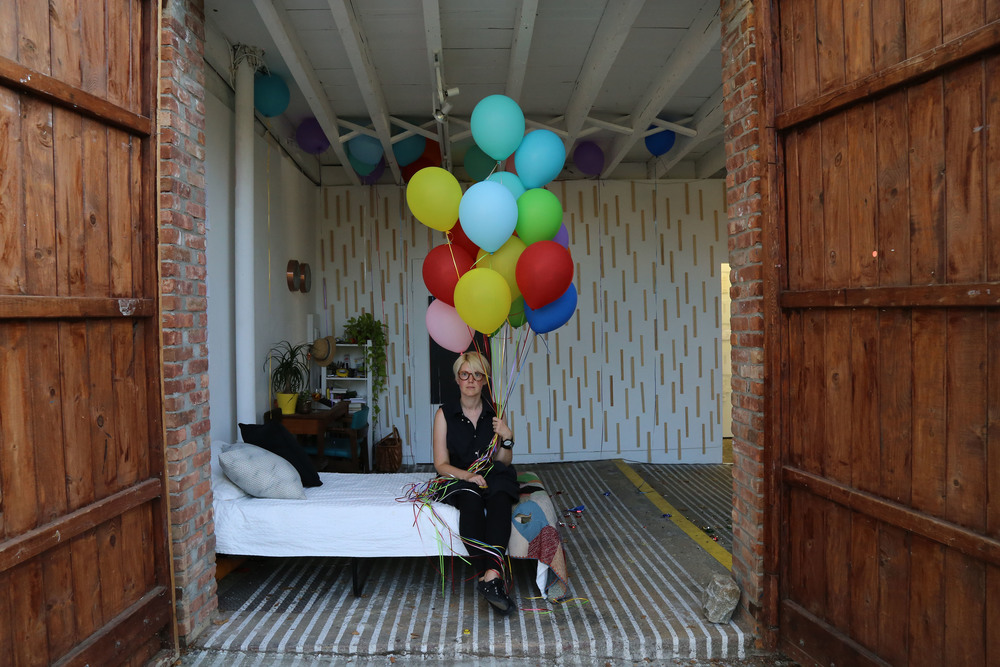“Sono stata in un altro tempo – un altro luogo – da qualche parte tra la Terra e Marte
sveglia e addormentata … transitando attraverso i pensieri – idee – sentimenti in un tempo reale che è interamente di mia creazione …”
-Sara Morawetz riguardo How the stars stand
“I have been in another time – another place – somewhere in between Earth and Mars
awake and asleep… transitioning through thoughts – ideas – feelings in a real time that is entirely of my own creation…”
-Sara Morawetz about How the stars stand
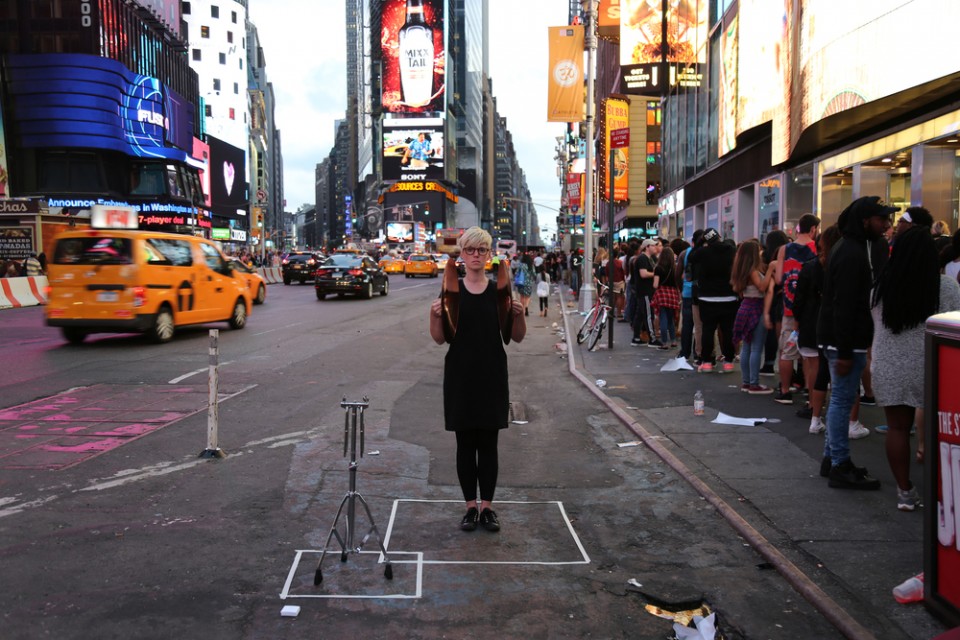
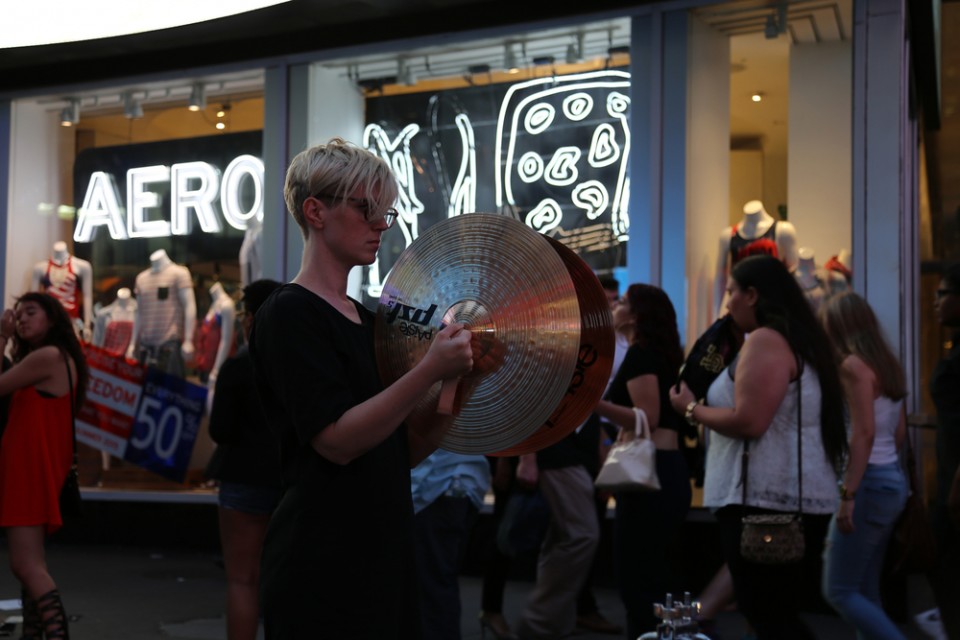
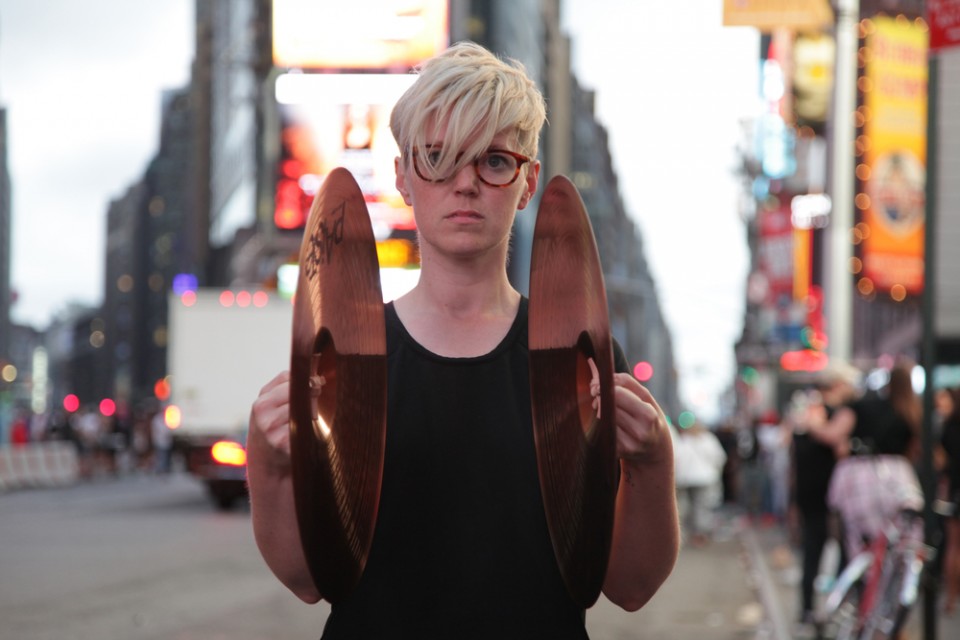
Sara Morawetz è un’artista australiana che ha studiato al Sydney College of the Arts, e presso la Parsons School of Fine Art, a New York
La Morawetz ha trattato, insieme a altri, anche il tema del tempo in due significative performance: 61/60 e How the stars stand.
Il 30 giugno 2015 23:59:60 UTC, in seguito alla decisione dell’International Earth Rotation and Reference Systems Service di aggiungere un “secondo intercalare” (leap second) per permettere agli orologi atomici di sincronizzarsi con l’effettiva rotazione della Terra sul suo asse, Sara Morawetz ha presentato a Times Square (New York) 61/60, una performance di un solo secondo da compiere alle 19:59:60, correlata all’inserimento nel mondo del “secondo intercalare”.
Sara Morawetz is an Australian artist who studied at Sydney College of the Arts, and at the Parsons School of Fine Art, in New York
The Morawetz treated, along with others, the theme of time too in two strong performances: 61/60 and How the stars stand.
At 30 June 2015 23:59:60 UTC, following the decision of the International Earth Rotation and Reference Systems Service to add a “leap second” (leap second) to allow atomic clocks to synchronize with the actual rotation of the Earth on its axis, Sara Morawetz presented in Times Square (New York) 61/60, a performance of a single second to be performed at 19:59:60, related to the insertion in the world of “leap second”.
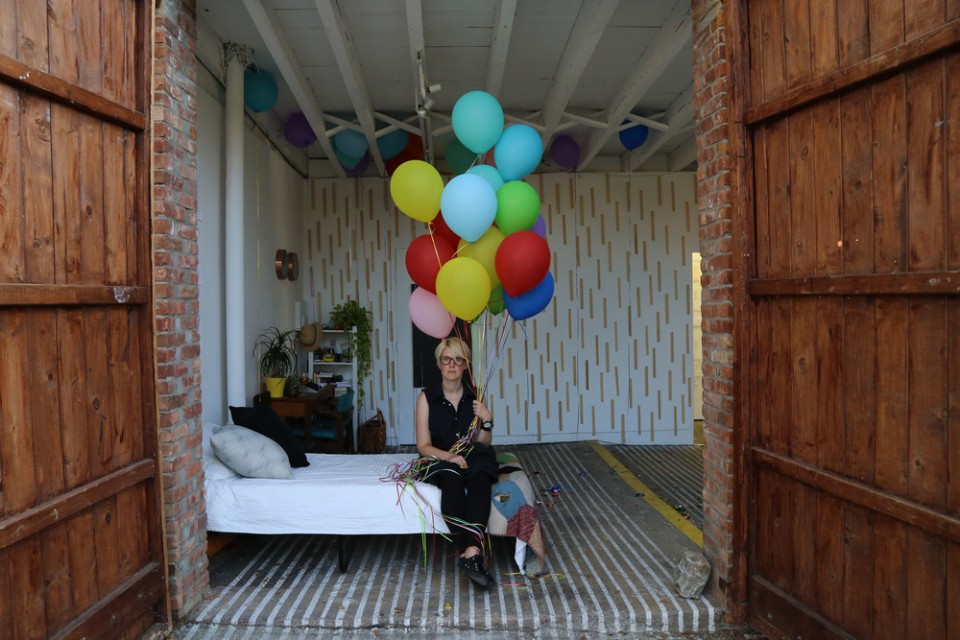

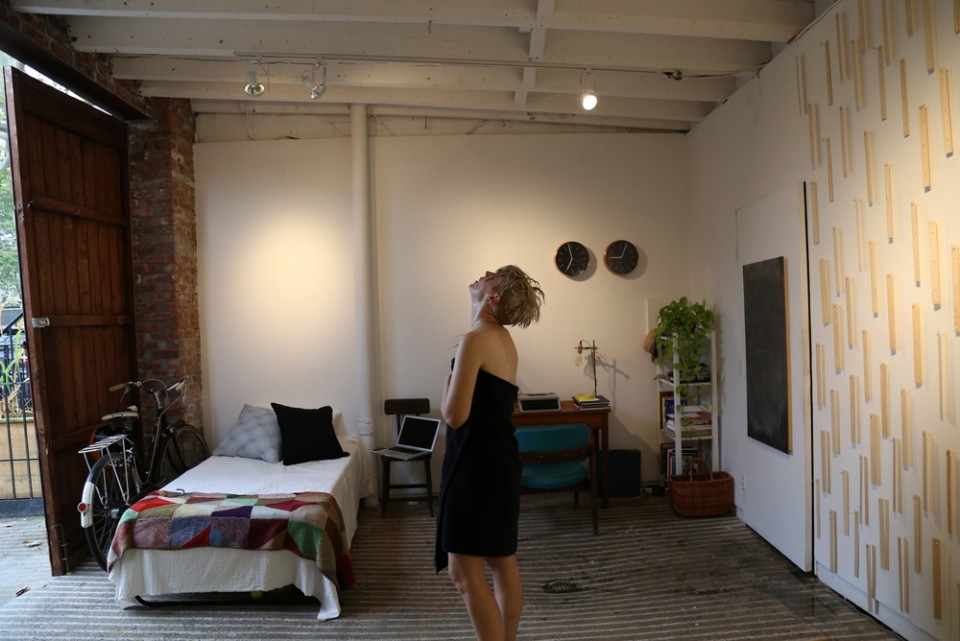
Ispirata da un passo delle Cronache Marziane (1950) di Ray Bradbury, l’artista australiana Sara Morawetz ha vissuto per trentasette giorni consecutivi presso la Open Source Gallery di Brooklyn adattandosi al Tempo di Marte nella performance How the stars stand. Il lavoro è iniziato il 15 luglio alle 9 del mattino per far coincidere l’ora della posizione occupata dall’artista sulla Terra (a Brooklyn) con l’ora di quella che avrebbe idealmente occupato su Marte (alle coordinate 189.400°E 40.670°N). Il tempo del pianeta rosso è stato misurato grazie all’applicazione Mars24 fornita dall’agenzia spaziale americana mentre due orologi da polso e due da parete sono serviti a Morawetz per orientarsi giorno dopo giorno tra i differenti orari.
Il titolo della performance è tratto dall’episodio dell’agosto 2002 di Bradbury intitolato Night Meeting, dove si legge la frase Where is the clock to show us how the stars stand?. Durante la performance, la Morawetz è uscita a fare la spesa, a vedere i suoi amici, a compiere insomma la normale routine, seppur con un occhio sempre puntato sulle lancette dell’orologio di Marte.
Inspired by a passage of Martian Chronicles (1950) by Ray Bradbury, the Australian artist Sara Morawetz has lived for thirty consecutive days at the Open Source Gallery Brooklyn adapting to Mars Time in performance How the stars stand. Work began on July 15 at 9 am to match the time of the position occupied by the Earth (in Brooklyn) with the time of what should ideally busy on Mars (at coordinates 189 400 ° E 40 670 ° N ). The time of the red planet has been measured by applying Mars24 provided US space agency while two watches and two wall served to Morawetz for orientation day by day among the different times.
The title of the performance is taken from the episode of August 2002 Bradbury entitled Night Meeting, where we read the phrase Where is the clock to show us how the stars stand?. During the performance, Morawetz went out to the grocery store, to see her friends, to make short, the normal routine, albeit with an eye always focused on Mars clock.
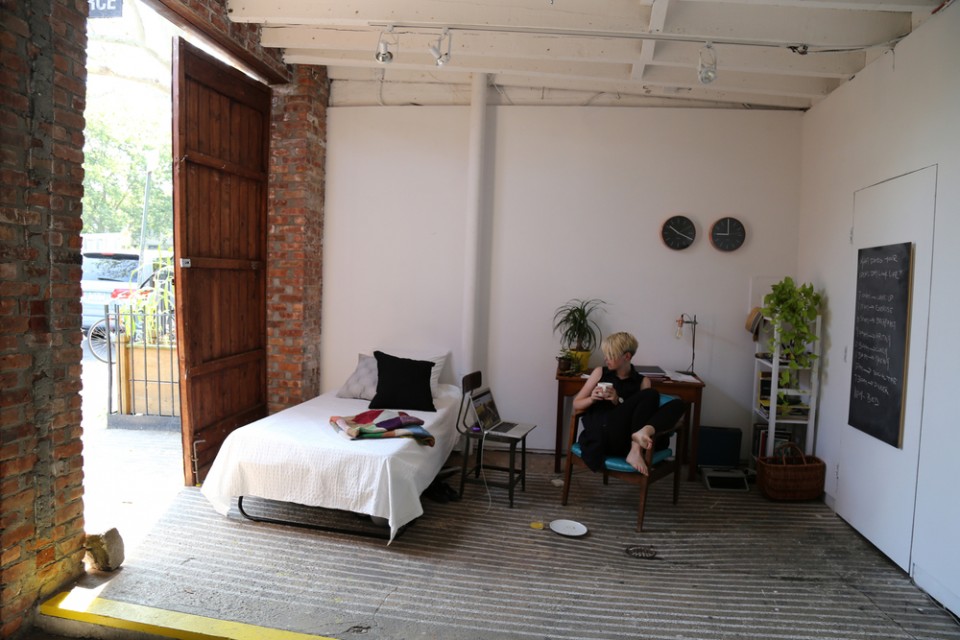
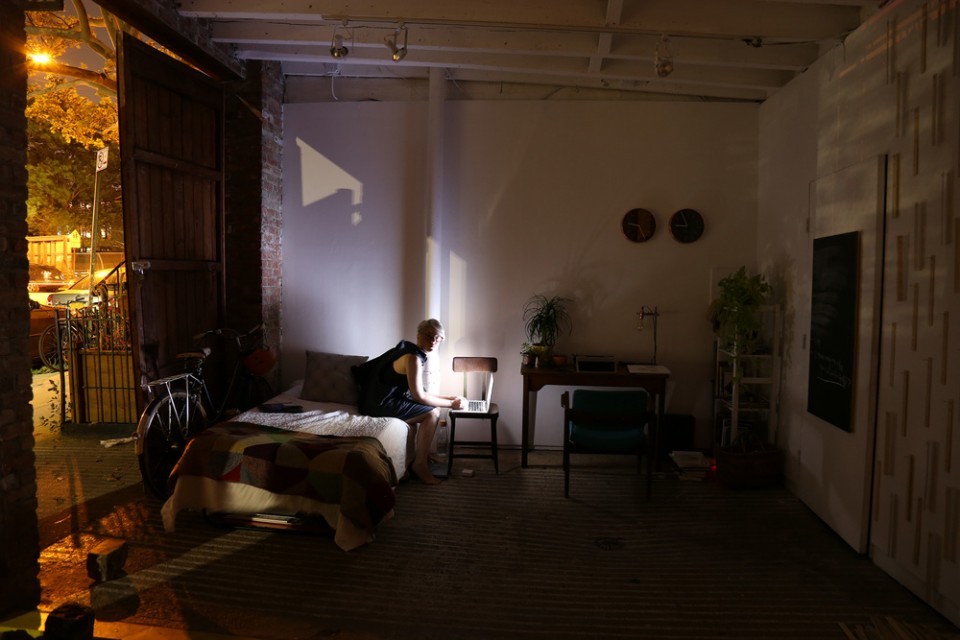
La genesi dell’opera è legata a una riflessione sulla durata del giorno marziano: chiamato sol, dura 24 ore, 39 minuti e 35,24 secondi, circa il 2,7% in più rispetto a quello terrestre. Una differenza apparentemente minima che non è più tale sul lungo periodo: se il primo giorno lo scarto è di soli quaranta minuti, già al terzo sarà di due ore e così via fino a confondere irrimediabilmente il giorno e la notte. Un anno su Marte dura 668,5991 sol, cioè 686,98 giorni terrestri.
Per tutta la durata di How the stars stand l’artista ha tenuto un “diario di bordo” online, nel quale ha man mano documentato le difficoltà incontrate nel portare a termine la performance: dai disturbi del sonno a quelli più pratici legati alla sua routine.
Assai suggestive ed esplicite in tal senso sono le fotografie del cielo azzurro accompagnate dal titolo My Night Sky: in questo modo How the stars stand mette in discussione la nozione di Tempo, il consueto rapporto che abbiamo con esso e ammette che “l’idea di vivere secondo un altro tipo di tempo mi sembrava un esperimento che valesse la pena di essere compiuto al fine di comprendere meglio non soltanto il tempo di Marte ma anche il nostro”.
How the Stars Stand è terminata alle 18 del 21 agosto, quando l’ora terrestre e l’ora marziana sono tornate a coincidere.
The genesis is linked to a reflection on the duration of the Martian day, called sol, lasts 24 hours, 39 minutes and 35.24 seconds, about 2.7% more than the Earth’s. A seemingly small difference that is no longer such a long period: if the first day of the gap is only forty minutes, already at the third will be of two hours and so on up to hopelessly confuse the day and night. One year on Mars lasts 668.5991 sol, ie 686.98 Earth days.
For the duration of How the stars stand the artist held a “board” online diary, in which she gradually documented the difficulties to complete the performance: from sleep disorders to the more practical related to her
Very suggestive and explicit in this regard are the photographs of the blue sky accompanied by the title My Night Sky: in this way How the stars stand puts into question the notion of time, the usual relationship we have with it and admits that ” the idea of living according to another kind of time it seemed an experiment that was worth to be done in order to better understand not only Mars but also our time”.
How the Stars Stand ended at 18 of August 21, when the Earth and Mars are now now back to coincide.
More info and photo credits on: SaraMorawetzOfficialWebsite and Open Source Gallery
